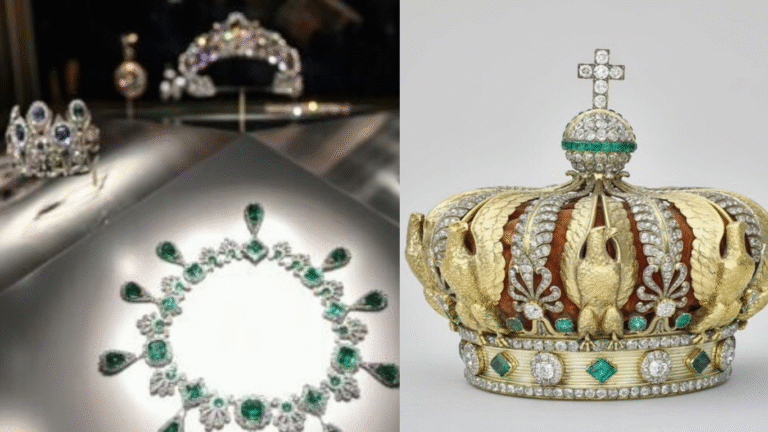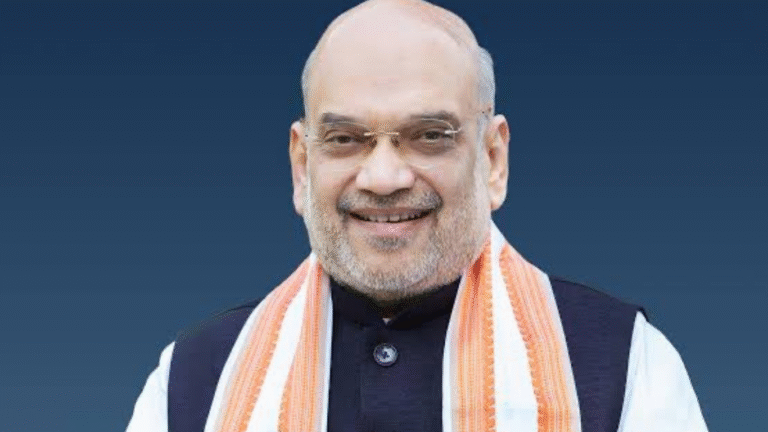
The Ambani name shines bright in India, like a diamond in the rough of Mumbai’s bustling streets. Mukesh Ambani, with his towering business empire, tops lists of the world’s richest folks, and his family’s weddings turn into global spectacles. But behind the glamour and the skyscrapers, whispers linger about tougher truths. Stories of cutthroat deals, family rifts, and questions about how such wealth really piles up. These aren’t just tabloid tales; they’re threads in the fabric of one of India’s biggest success stories. Let’s walk through some of these quieter corners, piecing together what reliable reports and old investigations reveal. It’s a reminder that even giants have feet of clay.
The Roots of Controversy: Dhirubhai Ambani’s Rise
Dhirubhai Ambani started from nothing, selling spices and dreaming big in a tiny Mumbai flat. Born in a small Gujarat village in 1932, he hustled his way from a gas station job in Yemen back to India, kicking off Reliance in 1958 with little more than grit. By the 1970s, he’d turned it into a textile powerhouse, listing shares on the stock market and pulling in everyday Indians as investors. He became a hero, showing that a common man could challenge the elite. But that climb wasn’t all smooth paths and open doors.
Whispers started early about how Reliance grew so fast. In the 1980s, folks talked of rigged government tenders, where Dhirubhai allegedly pulled strings to snag deals that should have gone fair and square. Books like “The Polyester Prince” by Hamish McDonald laid it out plain: claims of market tricks, where shares got shuffled in shady ways to boost prices. One big fuss was the 1988 stock battle, when “bear cartel” traders tried to tank Reliance shares, but Dhirubhai outmaneuvered them, reportedly supplying stock himself to flip the script and pocket gains. The Bombay Stock Exchange stepped in, slashing rates to calm the storm, but the damage to trust lingered.
Then there’s the Fairgrowth scandal in the early 1990s. Regulators accused Reliance of propping up its stock through backroom deals with brokers, inflating values to lure more buyers. SEBI poked around, finding holes but no smoking gun to nail Dhirubhai directly. Still, it painted Reliance as a player that bent rules to win. Tax dodges popped up too-clever loopholes, sure, but critics called them evasion plain and simple. Dhirubhai always denied it, saying he just played the game better than most. He faced raids, probes, and even a book ban in India after “The Polyester Prince” hit too close, with Reliance suing to keep it off shelves here. The Australian version stayed out, spilling tales of cronyism and pressure on rivals.
By his death in 2002 from a stroke, Dhirubhai left a mixed bag. Admirers saw a visionary who democratized investing; detractors, a master manipulator who cozied up to politicians for favors. His family honored him with the Padma Vibhushan in 2016, but those early shadows? They stuck around, shaping how we view the empire he built. It’s like watching a street vendor turn into a king-thrilling, but you wonder what deals got inked in the dark.
Brother Against Brother: The Epic Family Feud
Nothing tests family bonds like a mountain of money, and the Ambanis learned that the hard way after Dhirubhai passed. Mukesh, the elder, took the reins of Reliance Industries, while younger brother Anil got a chunk spun off into his own group. At first, it looked like a clean split in 2005, with Mukesh handling oil and gas, Anil telecom and power. But old promises soured quick, turning brothers into courtroom foes. What started as quiet grumbles exploded into a public brawl that gripped India for years.
The spark? Gas prices. A family pact set cheap rates for Anil’s firms to buy from Mukesh’s fields, but Mukesh backed out, saying the government demanded higher ones. Anil cried foul, accusing big bro of greed and backstabbing. Courts got dragged in, with the Supreme Court siding with Mukesh in 2010, forcing Anil to pay market rates. Billions hung in the balance, and Anil’s empire started crumbling- his companies racked up debt, faced defaults, and even jail threats. In 2019, a court held Anil in contempt over unpaid Ericsson dues; Mukesh stepped in last minute, bailing him out with cash that felt more like pity than peace.
Tensions boiled over in wild ways. Anil once claimed his chopper got sabotaged- mud and rocks jammed in the gears, hinting at rivals out for blood. No proof stuck, but it fueled the drama. Public spats flew too: Anil sued Mukesh for $2 billion in defamation after a New York Times chat where Mukesh called the split messy. Their mom, Kokilaben, played referee, pleading for unity in letters that leaked to papers. By 2011, Anil admitted defeat, saying he’d swallow the gas ruling without a fight. But the scars? Deep. Anil’s Reliance Communications tanked into bankruptcy, while Mukesh’s side boomed.
Outsiders watched in awe and pity. This wasn’t just business; it was blood tearing at itself. Reports painted Anil as the flashy underdog, with his foul-mouthed rants at execs, while Mukesh stayed the steady hand. The feud cost shareholders billions in market dips and split loyalties in boardrooms. Even today, with Anil a shadow of his old self, folks wonder if forgiveness is real or just for show. Families fight over dinner tables; the Ambanis fought over dynasties. It shows how wealth can twist love into lawsuits, leaving everyone a bit broken.
Power Plays and Penalties: Reliance Under Fire
Mukesh Ambani steered Reliance into a behemoth, diving into telecom with Jio and retail giants that touch every Indian life. By 2025, it’s worth trillions, with Mukesh at $108 billion net worth. But growth like that draws eyes, and not all kind. Allegations of corner-cutting and cozy government ties have dogged the company, turning boardroom wins into public headaches.
Take the 2007 stock mess. SEBI slapped Reliance with fines for fiddling futures trades in its petroleum arm, saying they hid deals to pump up prices unfairly. Mukesh got hit personally with a Rs 70 crore penalty in 2013, alongside the firm. No jail, but it stung- regulators called it “structured to escape notice,” a polite way of saying sneaky. Then 2021 brought more heat: a Rs 25 crore fine for old disclosure slips in a 2000 share issue, where the family quietly hiked stakes without telling watchers.
Jio’s launch in 2016 shook telecom, offering dirt-cheap data that crushed rivals. Awesome for users, but competitors screamed foul, filing with TRAI over “predatory pricing”- dumping rates to kill competition. Probes cleared Reliance mostly, but the monopoly whiff lingered. Critics point to Mukesh’s Modi links, claiming policies bend for Reliance, like spectrum auctions or green energy nods. In 2022, they caught flak for buying Russian oil despite Ukraine sanctions, prioritizing profits over principles.
Corporate governance gets flak too. Reliance’s web of subsidiaries hides ownership, making it tough for investors to peek inside. Whistleblowers and probes, like a 2015 Caravan piece on shady foreign firms, hint at money trails that vanish into thin air. And the book suppression? Reliance allegedly pressured publishers to kill updates to “The Polyester Prince,” fearing fresh dirt on crony deals. They deny it, but the pattern fits: control the story, squash the noise.
These aren’t small slips; they’re systemic gripes about how power concentrates. Reliance says it’s all cleared, just business in a tough world. But when your calls shape policy and your wealth rivals nations, questions multiply. It’s the price of being indispensable – every move under a microscope, every win laced with doubt.
Whispers Within Walls: Personal Scandals and Luxe Excess
The Ambanis live large- Antilia, that $2 billion Mumbai tower, screams it. Weddings with celebs and jets worth fortunes dazzle, but up close, cracks show in the fairy tale. Rumors swirl about private pains, from health woes to hushed family strains, painting a less glossy picture.
Anant Ambani’s story tugs hearts. Mukesh and Nita’s youngest battled obesity and allergies young, dropping 108 kilos with family cheerleading. His 2024 wedding to Radhika Merchant was a $600 million bash, but whispers say it masked deeper insecurities. Then Vantara, their massive Jamnagar animal rescue – home to 2,000 critters – faced 2025 Supreme Court heat. Activists claim illegal animal grabs and mistreatment; a probe team’s en route to check. Reliance calls it a rehab haven, but if findings sour, it tarnishes the eco-hero image.
Family ties get tangled too. Reddit threads and old Quora posts buzz with unproven tea: Mukesh as a rumored womanizer, Akash in a covered-up Aston Martin crash, Isha’s marriage allegedly rocky with IVF kids to keep up appearances. Nita’s poise hides claims of emotional pressure on the women to wed for status. Anil’s fall- from tycoon to defaulter, brought fraud charges in 2025, with CBI raids on his home over bank scams. Mukesh bailed him before; now silence reigns.
Abroad, their UK pad Stoke Park sparked rows. Bought in 2021 as a hotel, it’s shut to public but hosts family dos, breaching lease terms. Locals fume, councils probe- Mukesh’s vision of luxury clashing with community rules. And the extravagance? A $350k Hermes bag for Nita, private playgrounds at weddings- it’s tone-deaf amid India’s poverty.
These bits feel human, raw. The Ambanis brush them off as envy, stressing charity via Reliance Foundation. But in a nation grappling inequality, excess bites back. Personal scandals remind us: wealth shields, but doesn’t erase the mess of being mortal. Behind the velvet ropes, even kings stumble.
Legacy in the Limelight: What Lies Ahead
As the third generation steps up- Akash helming Jio, Isha retail, Anant energy- the Ambanis eye a handover. Mukesh, at 68, grooms them at AGMs, blending old values with new tech. Reliance pushes green hydrogen and digital India, aiming global. But shadows trail: will past probes haunt future deals? With Anil fading and Kokilaben at 91, the core family’s tighter, yet vigilant.
Critics fear monopoly grip – Reliance touches oil, phones, shops could stifle competition. Fans bet on innovation, like Jio’s data revolution. Either way, the Ambanis redefined ambition, from Dhirubhai’s gambles to Mukesh’s empires. Their story? A mirror to India’s own: bold rises, bitter falls, endless hustle. The dark bits don’t dim the light; they make the shine real.
FAQs
Who founded the Ambani empire?
Dhirubhai Ambani started Reliance in 1958 from a small trading firm, growing it into India’s biggest company.
What caused the Mukesh-Anil split?
After their father’s death in 2002, disagreements over assets, especially gas supply deals, led to a bitter 2005 division and years of legal fights.
Has Reliance faced legal troubles?
Yes, SEBI fined them multiple times for stock issues and trading irregularities, though most cases ended without major convictions.
What’s the latest controversy?
In 2025, a court probe into Vantara questions animal welfare and sourcing at the family’s wildlife center.
How wealthy is Mukesh Ambani today?
As of 2025, his net worth sits around $108 billion, making him Asia’s richest.



